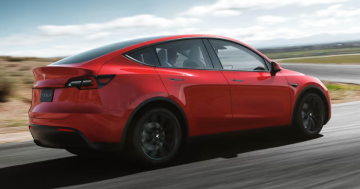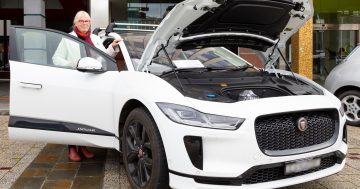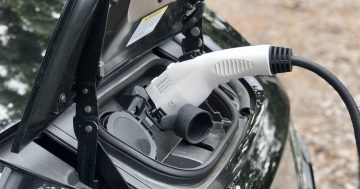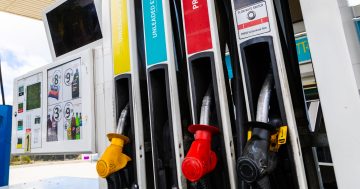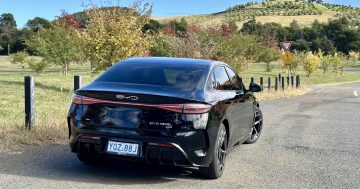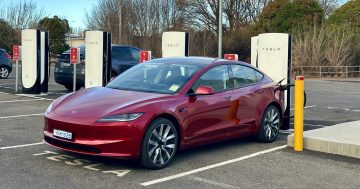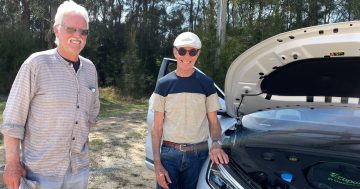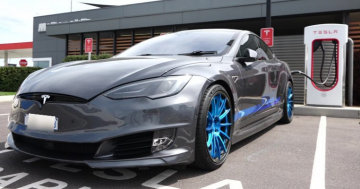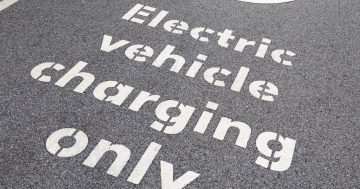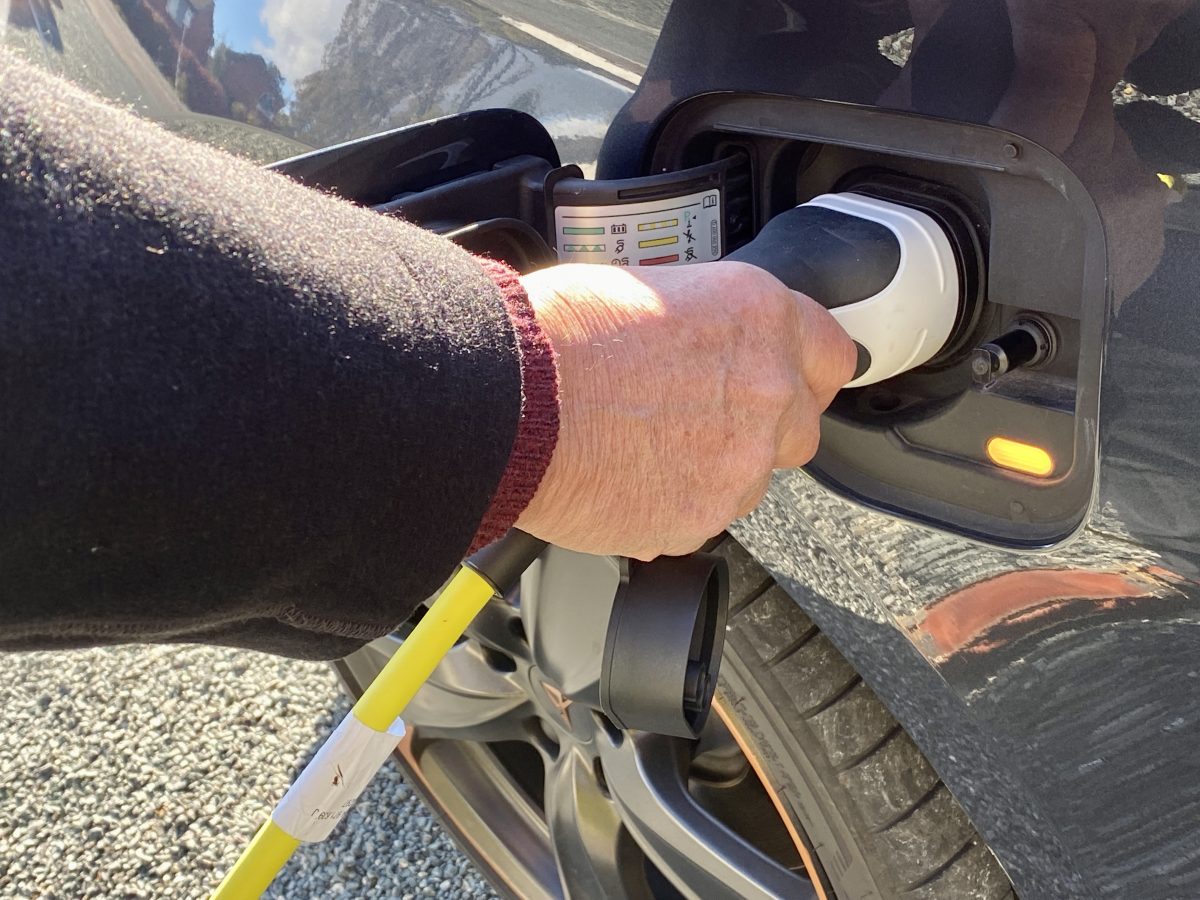
Charging rather than filling up means big savings on a holiday road trip. Photo: James Coleman.
Driving an electric vehicle (EV) can slash the cost of summer road trips, particularly on shorter runs such as to the South Coast, new analysis from the Climate Council shows.
The Climate Council says driving a lower or zero emissions vehicle could cut fuel bills to almost a fifth of what Canberra drivers would otherwise pay.
The analysis shows drivers on popular holiday routes from Canberra can save up to $177 on their journey with a battery EV and up to $127 with a more fuel-efficient petrol car, compared with the average petrol-guzzling car.
It covered three journeys – Canberra to Huskisson, Melbourne and Byron Bay – using an average passenger car, a more fuel-efficient internal combustion engine (ICE) vehicle and a battery charging EV.
The average passenger car cost $213 to get to Byron Bay, the more efficient vehicle $86, while the EV cost only $36, a saving of $127 and $177 respectively.
To Melbourne, it was a $136 trip compared to $55 and $23, a saving of $81 and $113.
To Huskisson the EV charge cost just $7, compared to a fuel bill of $40 and $16 in the other vehicles, savings of $33 and $24.
The Climate Council says charging at home with rooftop solar could bring even greater savings for EV drivers.
Hiring an EV was also an option.
The analysis comes in the midst of a cost-of-living crisis and as new figures show new sales of EVs doubling in 2023 to be 7 per cent of total new sales.
The ACT take-up was higher, soaring from 1280 in 2022 to 3396 (18 per cent) out of the 18,531 new vehicles that Canberrans drove home.
Climate Council Head of Advocacy Dr Jennifer Rayner said the analysis strengthened the case for an Australian Fuel Efficiency Standard, which would pave the way for more EV models to come onto the market, reduce prices and make them more accessible to car buyers.
Dr Rayner said the Federal Government had rightly taken a measured and consultative approach to introducing the standard but the time had passed for designing it and the policy should be delivered this year.
“It’s still very hard for a lot of people to get an electric or lower emissions vehicle in price points that they can access because we just don’t have the same range here in Australia,” she said.
“Its fuel efficiency standards are really about unlocking the range and the choice that people already have in other markets for Australians to be able to then pick the vehicle that works best for them.”

Climate Council Head of Advocacy Dr Jennifer Rayner: EVs can cut emissions and save Australians money.
Dr Rayner said the council’s research showed drivers were cutting their travel to save money on fuel so the interest in a cheaper running alternative was there.
She said charging infrastructure was rapidly improving and EV drivers were learning how to use their vehicles and manage their journeys better.
“If you compare this summer in this road trip season with the previous year, where there was a lot of discussion online about people having to queue at charging infrastructure along popular routes, we haven’t seen anywhere near as much of that this year,” Dr Rayner said.
As the world recorded its hottest year on record, Dr Rayner said switching to electric vehicles was a really practical way for Australians to cut harmful carbon pollution, given transport was producing a rising share of emissions.
“So if we don’t do something about transport, we’re not going to be able to really tackle the big challenge of harmful climate change, which we’re seeing is already harming Australians around the country including through the kinds of really extreme weather in Queensland at the moment, and last year’s record year of high temperatures,” she said.
“So we need to do this from a climate and environment perspective. But the real bonus is that it will help Australians cut their cost of living at a time when it’s a huge pressure for them.”
Melbourne-based Bryce Gaton, has been working on EVs since 2008 and contributes to The Driven and founded EV Choice, and regularly makes the trip to Sydney, sometimes via Canberra, in a Hyundai Kona, which does more than 500 km around town and 420 km on the highway.
He said improving EV battery and charging infrastructure had made longer journeys along popular routes much easier, and shorter trips such as to the South Coast from Canberra could rely on home charging at both ends, the cost of which would be negligible if rooftop solar was available.
After a full charge at home, a number of apps were available to locate available chargers, and a stop every two to three hours for a 15- to 20-minute charge was only what drivers should do on a long journey to avoid fatigue.
Mr Gaton said the main obstacle to more chargers along highways was the poles and wires people or Distributed Network Service Providers, who take far too long to approve and connect them.
Also an electrician, Mr Gaton said home charging could rely on a normal power point but his rule of thumb is that if you’re doing more than four hours of charging twice a week, go up a size.
Smart chargers allowed for efficient and economical charging, and could prioritise solar during the day. They also had timers, along with EVs themselves, to charge at the cheapest time of the day.
They would only be getting more sophisticated and interactive with the grid in the next 12 months to make charging even more efficient and cheaper.












